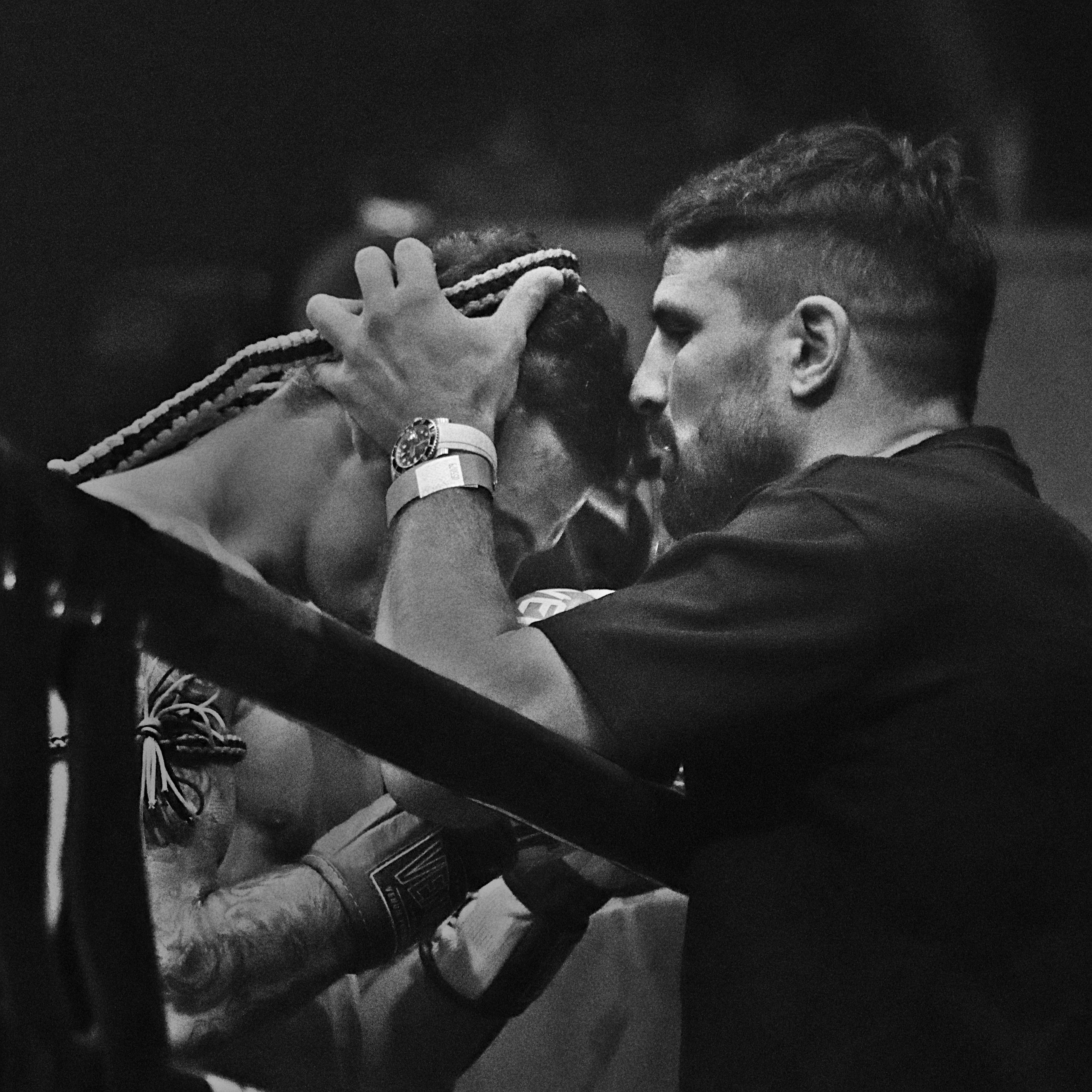Muay Thai has gone from a centuries-old martial art once used on the battlefields of Thailand to one of the fastest growing combat sports around the world. Although it is known as Thailand’s national sport, many people from across the globe practice and compete in the art.
History Of Muay Thai
We have little written historical records about Muay Thai, but historians do know that the sport evolved from the Thai martial art of Muay Boran, which soldiers practiced as part of their training and incorporated into their tactics on the battlefields of ancient Thailand.
Read more: Muay Thai History: A Timeline Of Thailand’s Legendary Martial Art
Origins And Meaning Of The Word “Muay Thai”
The sport of Muay Thai came from the Thai martial art Muay Boran, so people didn’t always call it Muay Thai until “The Father of Thai Sports” Luang Suphachalasai named the sport “Muay Thai” in the 1930s to promote it as a national pastime. “Muay Thai” (มวยไทย), when translated into English, means “Thai boxing.”
Muay Thai Fighters
As it stands, Muay Thai fighters are known as nak muay (นักมวย) and traditionally come from two areas of Thailand, the northeast and the south. These two regions have produce many world class fighters for a reason — they are home to some of the most impoverished people in Thailand.
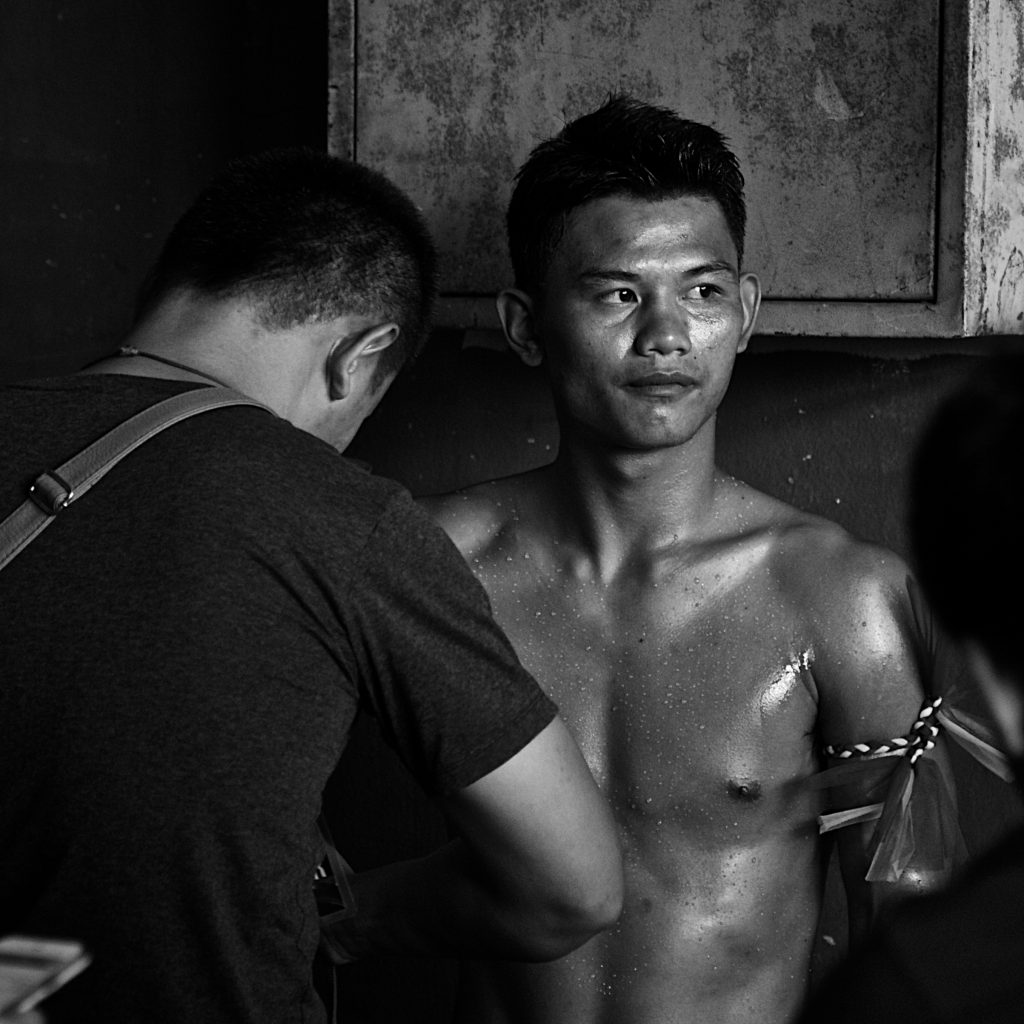
With little resources to thrive, many children turn to fighting instead of following in their parents’ footsteps as farmers or fishermen. If a fighter is good enough, he or she could become a provincial champion and, if they’re even luckier, go recruited to train in Bangkok and compete at one of the prestigious Muay Thai stadiums.
Weapons Of Muay Thai
Muay Thai incorporates the use of punches, elbows, knees, and kicks. Fighters can attack their opponent’s head, neck, torso, arms, and legs with any of these weapons. They can also defend these weapons by blocking with various parts of their body or by moving out of the way. Fighters can also attack from within the clinch and can sweep their opponents to the ring.
- Punches: Although Muay Thai fighters don’t focus solely on boxing, they use the traditional punches like jabs, straights, crosses, hooks, and uppercuts.
- Elbows: Elbows are one of the most dangerous weapons of Muay Thai. Fighters use horizontal, vertical, jumping, and spinning elbows.
- Knees: Knees are another dangerous weapon in Muay Thai. Fighters use step-in knees, straight knees, side knees, knee kicks, or jumping knees.
- Kicks: Muay Thai is a more conservative martial art when it comes to kicks, but its kicks are fast, powerful, and bone-breaking. Some fighters do throw spinning kicks, but most use low kicks to their opponent’s leg, body kicks, or head and neck kicks.
- Clinch: The clinch in Muay Thai is an art within itself and fighters spend hours upon hours each week mastering the clinch.
- Sweeps: Muay Thai incorporates some sweeps but nothing near as intense as Judo. In fact, Muay Thai fighters can’t hip-throw their opponents. Instead, they use subtle movements and their opponent’s own body weight to off-balance or sweep each other.
Styles Of Muay Thai
Although most nak muay can perform in all areas of Muay Thai, most fighters lean heavily toward one style of fighting. Let’s look at four of the most popular styles of fighting.
- Muay femur: A style of fighting that emphasizes evading and counter-attacking. This style was popular from the 1990s to 2000s but has sadly since started to fade with the rise of entertainment Muay Thai. But some fighters like Tawanchai PK Saenchai have adapted the muay femur style to modern Muay Thai.
- Muay mat: A style of fighting that focuses on punching. These fighters like to walk forward and throw hard and heavy punches. With the rise of entertainment Muay Thai and the thirst for knockouts, we are seeing more muay mat fighters than ever before.
- Muay dtae: A style of fighting that emphasizes kicks over all other techniques. Superlek Kiatmoo9 is one of today’s most lethal kickers in Muay Thai and embodies the muay dtae style of fighting.
- Muay khao: A style of fighting in which fighters favor the clinch and knees (and sometimes elbows) above all techniques. One of the greatest muay khao in recent times is the now-retired 15-time Muay Thai champion Petchboonchu FA Group.
Muay Thai Gyms And Camps
In Thailand, fighters usually live at the Muay Thai camp full time. There, they train, eat, sleep, and have some leisure time. Once they complete their training and fight, they return back to their home province for about a week to share their prize money with family members. They may even have a wife and children back home.
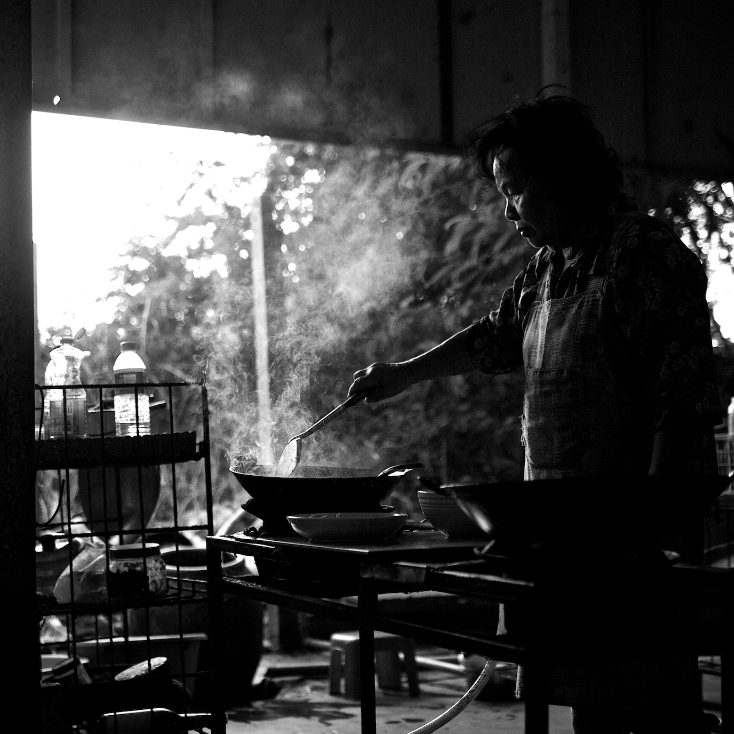
Muay Thai gyms set strict rules for fighters, such as what time training begins and ends every day, what time the fighters can stay out until, and what they can and cannot eat. Although the younger fighters abide by these rules, the older, more established fighters tend to have more leeway.
Muay Thai Camp Owners
Muay Thai gym owners come from all walks of Thai life, but the successful ones typically run multiple businesses and the gym acts as a side hobby. They may be property tycoons, promoters, business owners, or even loan sharks. Some of them carry a lot of power in the Muay Thai world, and even if they’ve never stepped foot inside a ring, fighters show them a lot of respect.
Promoters Of Muay Thai
Once upon a time, the Muay Thai stadiums in Bangkok were home to dozens of promoters, each rotating days throughout the week to promote events at either Lumpinee, Rajadamnern, or other stadiums. Nowadays, there are only a handful of major Muay Thai promoters who consistently put on fights at the stadiums. Promoters typically have matchmakers working for them, and these matchmakers are responsible for pairing fighters against each other.
Muay Thai Referees And Ringside Judges
Most Muay Thai officials in Thailand are former fighters who have gone through a course to become a referee and ringside judge. Some officials, however, don’t have any fight experience but are still great at what they do. Muay Thai referees in Thailand put themselves into the fight. If a fighter falls to the canvas, for instance, the official dives in to catch the fighter’s head before it hits the ring, eliminating the potential for further damage.
Ringside Doctors
Ringside doctors in Muay Thai are generally practicing doctors who work on the side at the fights. If a fighter is cut or injured, the referee calls the doctor to the ring to inspect the fighter. If the doctor feels the fighter can continue fighting safely, they will tell the referee the fight can continue. When a cut is too deep or is near the nerves of the face, the doctor will advise the referee to stop the fight.
Rules Of Muay Thai
Because the sport is changing so rapidly from traditional Muay Thai to entertainment Muay Thai, the rules are also changing. Each promotion has certain rules in place that they value. That said, here are some rules that apply across the board.
- Offensive attacks: Fighters can attack using punches, kicks, elbows, knees, and sweeps and throws — as long as they don’t throw their opponents over the hip.
- Illegal attacks: Biting, headbutting, knee striking to the groin (although considered unsportsmanlike, not all groin strikes are illegal).
- Rounds: Five, three-minute rounds or three, three-minute rounds with two-minute breaks in between.
- Age requirements: To compete in the professional ranks at the stadiums in Bangkok, fighters must be at least 15 years old.
Weight Divisions In Muay Thai
Muay Thai fighters compete in weight classes that start at just under 100 pounds and go all the way up to over 200 pounds. In Thailand, however, the most popular weight classes range from 118 pounds to 147 pounds.
Dances Of Muay Thai
Muay Thai has two traditional dances that fighters perform before the fight — the wai kru and the ram muay. But fighters weave these two dances so tightly that it’s often hard for the layperson to distinguish one from the other.
- Wai kru: The wai kru begins when both fighters enter the ring and the sansara music begins. The fighters will first walk around the inside perimeter of the ring to seal it off from misfortune before spiraling toward the center of the ring to perform the ram muay.
- Ram muay: The ram muay begins when the fighters kneel down in the center of the ring and begin a series of dances, each representing various animals and mythological creatures.
Muay Thai Gear
When a fighter steps into the ring to compete, he or she wears all of the mandatory and some of the optional Muay Thai gear.
- Gloves: Traditional boxing gloves measured in ounces and sized according to the weight of the fighters. That is, each weight division has a specific glove size in ounces. Some Muay Thai promotions who promote entertainment Muay Thai use 4-ounce MMA gloves.
- Hand wraps: Hand wraps made of gauze and provide an additional layer of protection for the fighter’s hands.
- Protective cup: Protective cups made of steel and protect a fighter’s groin. As a side note, some low blows are legal in Muay Thai. Only knees that land below the belt are illegal.
- Shorts: Muay Thai fighters wear shorts that ride above their knees and stretch wider at the thighs. This gives fighters the room to kick and move freely in the shorts.
- Ankle guards: Ankle guards are optional in Muay Thai, but they provide an extra layer of protection. They protect the fighter’s feet and ankles when kicking, and they also make the ankles more stable.
- Mouthpieces: Mouthpieces protect fighters from losing their teeth. But in some cases, I’ve seen fighters lose their teeth, even while wearing a mouthpiece.
Sacred Garb And Lucky Charms Of Muay Thai
Because Muay Thai is steeped in tradition, many items have been incorporated into the sport to give it a deeper meaning.
- Mongkol: The Mongkol is a sacred woven headband that fighters wear to the ring and while performing the wai kru and ram muay before the fight. Before the mongkol is used, it’s usually blessed by a monk. The mongkol is put on the fighter’s head by a respected member of their gym, a family member, a sponsor, or any other significant person before the fighter walks toward the ring and removed right before the fight. Fighters aren’t allowed to touch the mongkol they are wearing.
- Prajiads: Prajiads are the braided armbands that a fighter wears tied around their biceps. They can be made from anything personal to the fighter, like a mother’s shirt, or from something as simple as a strip of medical gauze. Unlike the mongkol, a fighter can touch the prajiads.
- Phuang malai: Before traditional Muay Thai fights, fighters were often given a sting of flowers called a phuang malai. These flowers would be presented to them from a sponsor or other significant member of the Muay Thai community.
- Amulets: Ninety-five percent of Thai society practices Buddhism, and Buddhist amulets are a big part of Muay Thai. Fighters wear the amulets around their necks or weave them into their mongkols. These are removed before the fight begins.
- Waistbands: Some nak muay wear traditional waistbands to the ring.
Muay Thai Superstitions
There used to be a lot of superstition about the Muay Thai ring and women. In fact, up until the early 2020s women couldn’t compete in the ring because people believed their menstruation cycle would pass on bad luck.
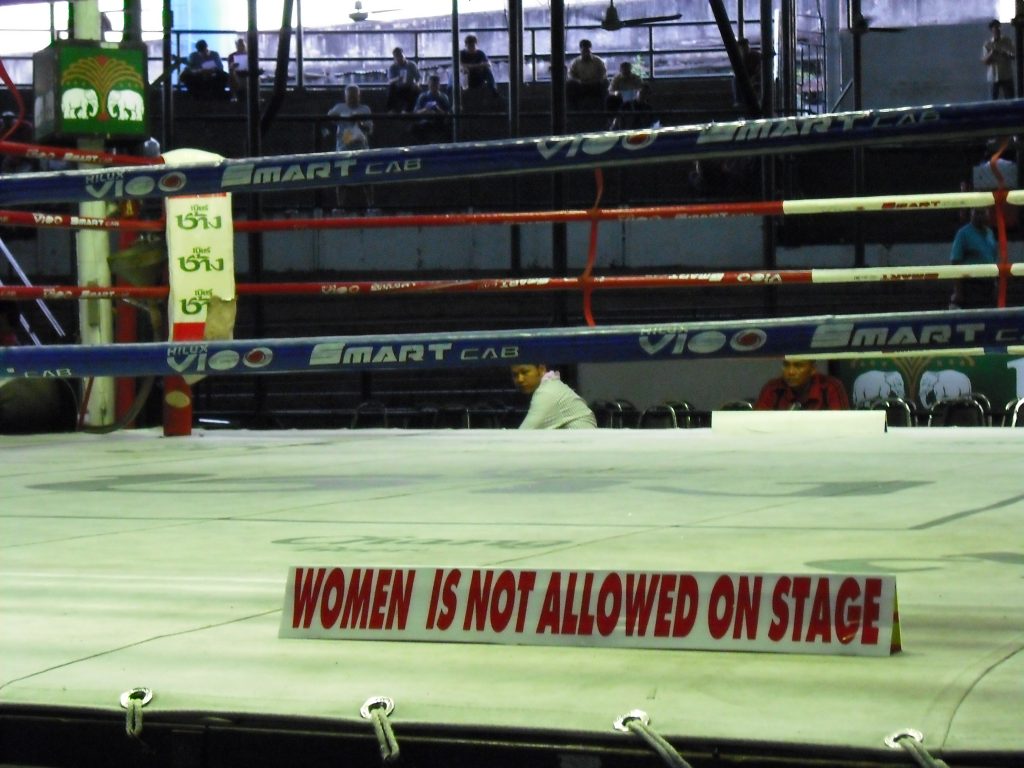
Channel 7 Boxing Stadium and Siam Omnoi Stadium still don’t let women compete in their rings, but Lumpinee Stadium and Rajadamnern Stadium now do.
Traditional Muay Thai
When you think of Muay Thai, what comes to mind is probably the traditional version of the sport, complete with the garb, the music, the dancing, the five rounds, and the gamblers. Although the sport has been shifting to the three-round entertainment format, traditional Muay Thai still lives on in places like Rajadamnern Stadium, Siam Omnoi Boxing Stadium, and Channel 7 Boxing Stadium.
Read more: Traditional Muay Thai: Everything To Know About Thailand’s Greatest Pastime
Entertainment Muay Thai
Over the last decade, Muay Thai has been transitioning away from catering to the gamblers and focusing more on the entertainment factor. Because of this, traditional five-round fights have been reduced to three-round fights, and fighters are encouraged to be more aggressive. Although MAX Muay Thai made the format popular, ONE Championship has taken it to a whole new level.
Read more: Entertainment Muay Thai: The Flip-Side Of Thailand’s Greatest Sport
Muay Thai Rings And Rituals
Muay Thai rings measure anywhere from 16 x 16 feet to 24 x 24 feet, depending on the stadium. Metal makes up most of the ring’s structure, followed by a wooden floor topped with thin padding. That padding is covered with canvas, which offers a non-slip surface for fighters to compete on. Padded ropes, four from top to bottom, run along the perimeter of the ring to protect the fighters from falling out. Each corner of the ring has a padded turnbuckle.
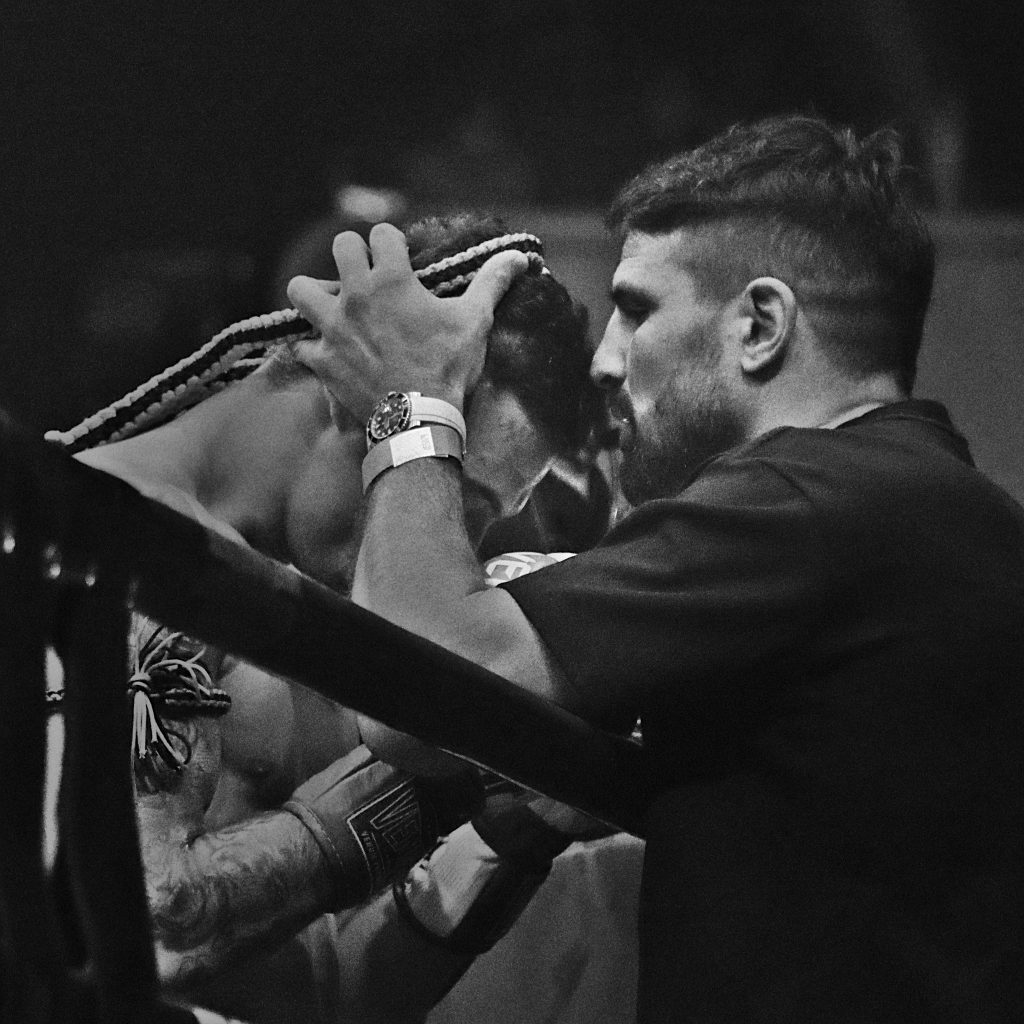
You will never see a fighter enter the ring by going under the other ropes. In fact, they always go over the top rope because they are wearing the mongkol. If you recall from the section above, many people consider the mongkol sacred, and it should never pass underneath anything else. Essentially, it must remain the highest object when being worn.
Muay Thai Stadiums
Thailand is home to quite possibly the only dedicated Muay Thai stadiums in the world. And Bangkok is home to the best of the best. Click on any of the links below to read my in-depth guide to each stadium.
- Rajadamnern Muay Thai Stadium: Thailand’s oldest Muay Thai venue that holds fights every day of the week.
- New Lumpinee Boxing Stadium: The rebuilt historic arena that once sat on Rama IV Road, now home to ONE Championship, LWC, and Fairtex Fight.
- Channel 7 Stadium: A studio-style stadium that airs fights every Sunday on Channel 7 and is free to enter.
- Siam Omnoi Boxing Stadium: On the outskirts of Bangkok, this stadium hasn’t changed much over the years.
Read more: The Best Bangkok Muay Thai Stadiums For A Uniquely Authentic Experience
Does Muay Thai Have A Belt-Ranking System?
Traditional Muay Thai does not have a belt ranking system. Practitioners progress through the art like they would when studying boxing. But some schools in the West incorporate a belt system to give students — especially younger ones — incentive to keep training. Even some schools in Thailand have incorporated a belt system. Purists, however, criticize belt systems because they have never been part of the sport.
Is Muay Thai The Same As Kickboxing?
Muay Thai is not the same as kickboxing because it allows the use of clinching and elbows, where kickboxing doesn’t. Also, fighters tend to stand in one place and fight, whereas kickboxers stay lighter on their toes and move around more. Muay Thai is also steeped in tradition. Kickboxing doesn’t have the traditions that Muay Thai does. The only way they are similar is in the round formats, gloves, and lack of belt-ranking systems.
How Does A Fighter Win In Muay Thai?
In Muay Thai, a fighter can win in one of four ways:
- Judges’ decision: If a fight goes the entire three or five rounds, the judges will decide who won the fight based on a set criteria. Judges award a fighter either a unanimous decision (all three judges score the win for the same fighter); a split decision (two of the three judges score the win for the same fighter); or a majority decision (two of the three judges score the win for the same fighter and the third judge scores the fight a draw).
- Knockout: Fighters can win by knocking out their opponent. A knockout is either when a fighter is rendered unconscious or is conscious but clearly unable to continue.
- Technical knockout: Technical knockouts are awarded to fighters who either knock down their opponents three times in one round (or sometimes four times in one fight), cut their opponents to the point where the doctor stops the fight, or hurts their opponent to the point where they can’t make the referee’s eight-count.
- Disqualification: Sometimes, fighters are awarded a win if their opponents are disqualified for breaking the rules.
- Draw: Sometimes, a winner cannot be decided and a fight ends in a draw.
